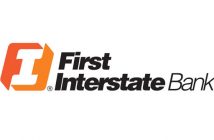Managing inventory and properly accounting for changes in demand is often one of the most challenging aspects of running a small business. Not only do you need to anticipate the future demand and stock the inventory, but you also need to safe guard it and make sure that it is properly recorded in your accounting system.
Understanding how to manage your inventory will not only ensure that your customers always have the products they want to buy, but it will also help your business’ cash flow. By using some of the CPA study guides published by the AICPA, you’ll be able to improve your accounting skills and inventory management techniques to run your small business more smoothly.
Here are three of the most effective methods that accounting professional suggest to improve your small business inventory problems.
1. Use an Inventory Management System
Many small business owners try to track their inventory with an excel spreadsheet. Or worse, they try to use paper ledgers. These methods just simply don’t work for any type of small business that deals with a large amount of inventory.
You need to invest in a dedicated inventory system that will track the shipments to your store and the sales that leave your store. An automated system will immediately place your newly arrived inventory shipments into your inventory accounting records. As customers purchase the goods, it will automatically deduct them from your accounting records, so you don’t need to constantly track them manually.
More advanced inventory systems even have options to track damages and stolen items as well. That way you will know exactly what you have on hand at any moment and what you need to order and when.
Some small business owners think that these systems are expensive or difficult to set up, but they can be relatively affordable.
2. Anticipate Seasonality
Most businesses have busy seasons and slow seasons. Rarely are businesses busy constantly throughout the entire year. That is something that small business owners have to deal with.
You don’t want to purchase too much inventory during your busy season and get left holding through your entire slow season. This situation presents two major problems for your business. First, you will have a large supply of inventory that will need to be stored during your slow season if it is not perishable.
Second, you will have a large amount of money tied up in inventory that you won’t be able to sell for several months at a time. Having your cash flow tied up like this could mean the difference between making through the slow season and having to shut your store down.
The solution to this problem is to use your inventory system to analyze the current demand on your products. You need to balance the advantages of bulk discount purchases with the disadvantages of having too much inventory. Just because you got a good deal on purchasing the inventory doesn’t mean it was actually a good deal for your business. There’s always a trade off.
Instead, try to purchase inventory when you need it. Just-in-time inventory systems can be difficult to run, but it will save your business’ cash flow.
3. Talk with Your CPA
It’s always a good idea to get professional advise at any stage of your small business journey. Who better to ask about your inventory management problems than your Certified Public Accountant? After all, there are full sections of the CPA exam devoted to inventory management. Your CPA will know a thing or two about it.
The CPA you use to do your taxes will have an in-depth understanding of the amount of inventory your carry on your books and your cash balances throughout the year. He or she will be able to give you advice on how much you should be spending on inventory during the year and what times it makes the most sense to invest heavily in new inventory purchases.
You can also consult with your sales reps for the different vendors that you work with. It’s important to maintain a good working relationship with them because they might be able to get you special discount or help you plan out your inventory purchases at more advantageous times during the year.
4. Analyze Your Product Mix
Simply purchasing inventory is the right volumes isn’t enough. You also need to focus on the right product mix. You don’t want to get stuck with products that your customers don’t want and you can’t move. According to the US Census Bureau’s Manufacturing and Trade Inventories and Sales report, most small businesses were stuck holding excess product in the past two years.
Talk with your vendors and see if they will allow you to alter your product mix to better match your customer base. It is common for some companies to require their dealers to purchase specific products regardless how well they sell, so talk with your vendors and see if you can work out a custom deal to match your demographic customers’ needs before you make your next big inventory purchase.
Conclusion
Managing your inventory is probably the hardest part of running a small business. Purchasing too much at a time might give you a good discount, but it also might leave you with a large amount of cash tied up in goods that you can’t move.
Analyze your sales and cash flows over the last few years to see where you can improve your purchasing of overall product volume as well as product mix. Making these changes can make your store much more profitable.





